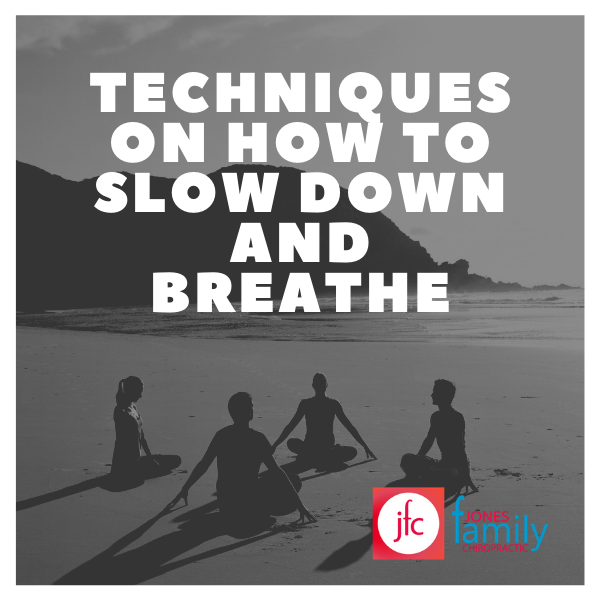Podcast: Play in new window | Download
WANT TO LISTEN TO THE PODCAST EPISODE INSTEAD OF READING? JUST CLICK HERE
Whenever you are stressed or anxious, you tend to increase your risk of depression, insomnia, and so on. Oftentimes the best advice, however, is to slow down and take a deep breath. But unfortunately, many people see it as an old cliché because they do not understand how this process works.
One of my patients once said, “Dr. Jones, I really do not believe that breathing can ward off my anxiety and stress; is there any other more effective way?” My answer has always been, “You need to learn the right techniques to slow down and breathe; it works great to calm you down and make you feel rested.”
Your autonomic nervous system, which controls processes like digestion, heart rate, and breathing, is responsible for turning our internal dials up and down.
When you run into a lion, for example, your heart rate goes off the roof, and you begin to breathe rapidly and shallowly. At this point, your autonomic nervous system steps in to calm you down. But this can be hard if you’re not physically exerting yourself. You are likely to experience symptoms like:
- Shortness of breath
- Dizziness
- Confusion
- Nausea
- A lump in the throat
- Tingling or numbness in the hands and feet
However, the good news is that you can reverse these symptoms by practicing changing your breathing. We teach several techniques to slow down and breathe at our Chiropractic Office at Elizabeth City, NC. Yea, these techniques stimulate the body’s parasympathetic response/ relaxation response, which are characterized by the following physical changes:
- Breathing slows
- Heart rate slows
- Oxygen consumption decreases
- Muscles tension decreases
- Blood pressure decreases
- Calmness in mind
Techniques to Slow Down and Breathe
You need to understand that when you’re anxious, you often breathe into your upper chest instead of breathing into your lower chest. This is the major cause of hyperventilation (shallow upper breathing).
But the following techniques will help you take a deeper, slower breath:
1. Natural Breathing or Abdominal breathing
This breathing technique is what we all should practice all day long, except you’re involved in physical activity. It is the opposite of what we experience during anxious moments. (Your abdomen expands as you breathe instead of your chest). More so, it helps to supply sufficient oxygen to the body and controls the exhalation of carbon dioxide.
How it goes:
Gently inhale enough air through your nose into your lower lungs alone. And then breathe out slowly. Your upper chest should remain still while your stomach will expand.
Continue this gentle breathing technique with a relaxed attitude, and focus on filling only your lower lungs.
2. Deep Diaphragmatic Breathing or Calming Breath
You can use this breathing technique whenever you are feeling anxious or panicky. It slows a rapid heartbeat and promotes physical comfort.
How it goes:
Breathe in slowly through your nose, filling your lower lungs and your upper lungs.
Suspend your breath and count to “three.”
Purse your lips and exhale slowly, relaxing the muscles in your jaws, face, stomach, and shoulders.
You can try this technique at least 10 times a day for several weeks. Use it whenever you want to let go of tension, and whenever you begin to feel anxiety or panic building.
3. Calming Counts
This technique is more beneficial than a calming breath. It takes about 90 seconds to complete rather than 30 seconds. This helps you focus on other tasks rather than your worrying thoughts.
How it goes:
Sit comfortably and take a long, deep breath. Then, exhale slowly while saying the word “relax” in your head.
Close your eyes and take 10 natural breaths. Then, exhale with a countdown, starting with “ten.”
While breathing comfortably, imagine any tensions loosening, perhaps in your forehead, jaw, or stomach.
When you count down to “one,” open your eyes and again and repeat.
As you practice these three techniques, always remember that your current thoughts have a huge influence on your breathing. So try replacing your negative thoughts with positive thoughts as you work on your breath during a panic.




